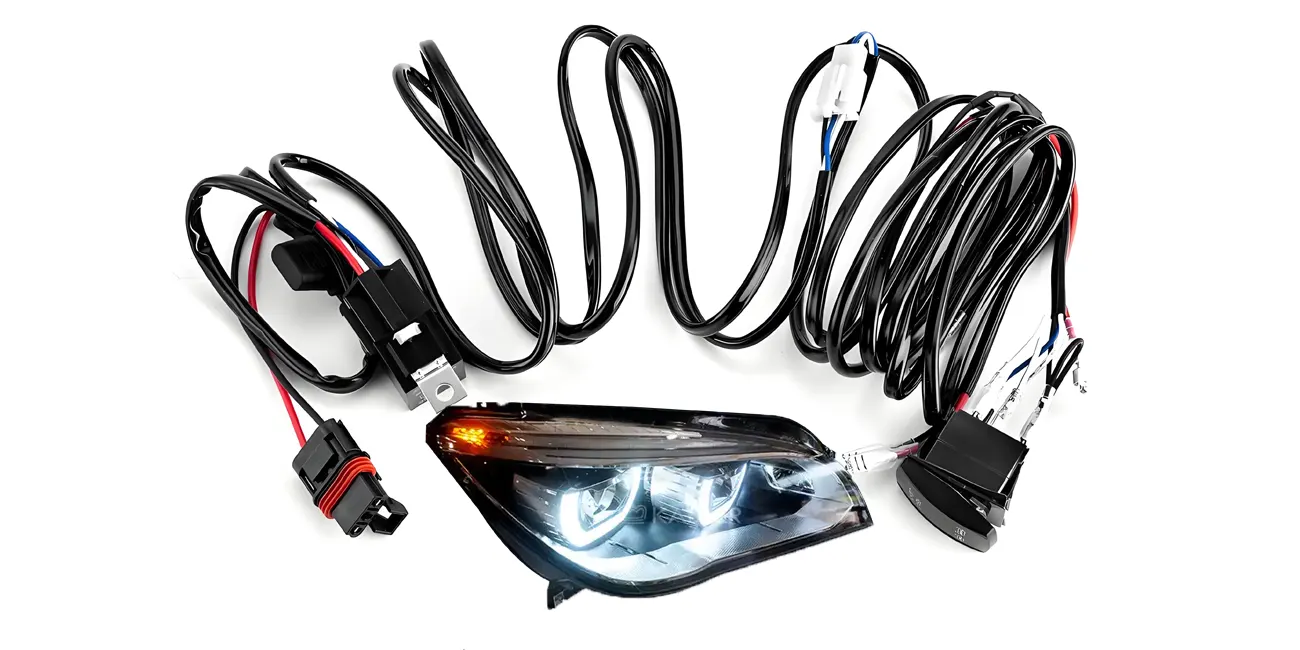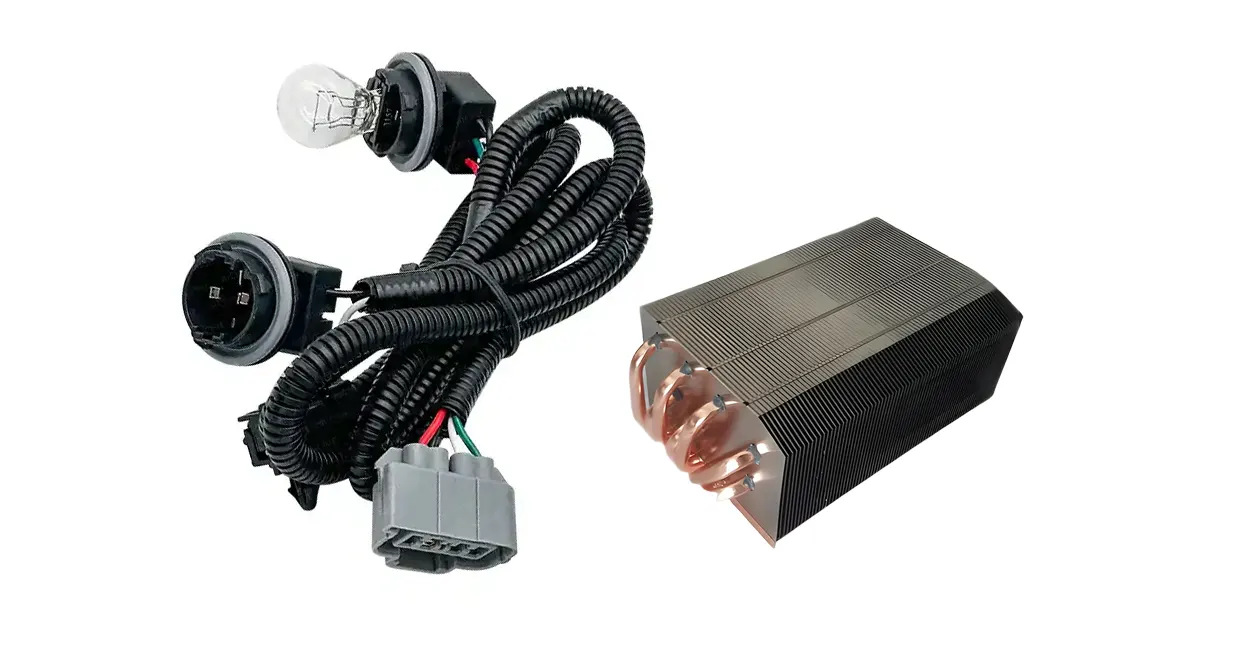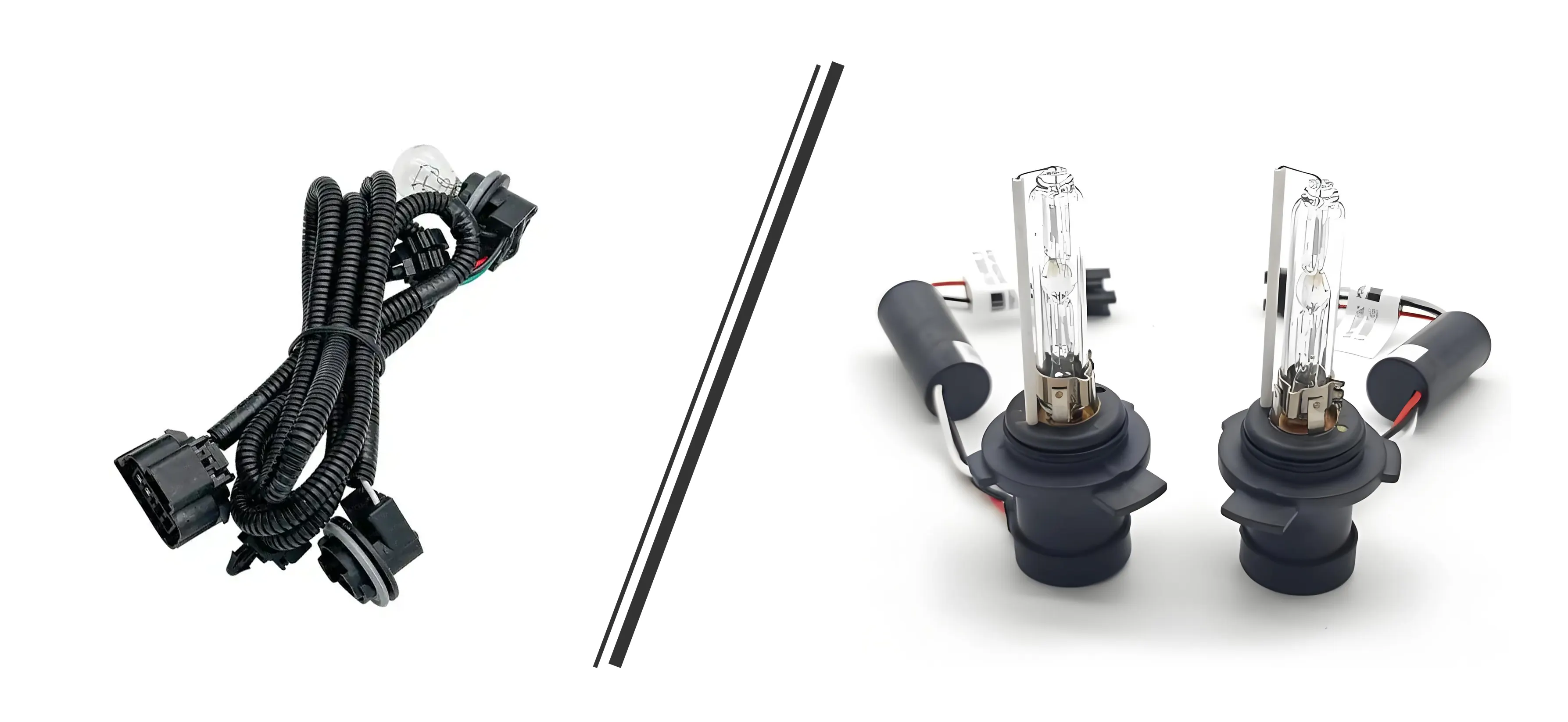
By quanyu lee
2025-04-12 02:00:08
Led Headlight Wire Harness Guide
LED headlight harness is an integrated lighting component specially designed for vehicle headlights. It uses semiconductor chip light-emitting technology to generate white light by stimulating phosphors with blue light. It has high light efficiency and long life.
Wires and connectors of LED headlight harness: Contains multi-core wires (such as copper core wires) and standardized terminals (such as XH2.54 terminals, circular cold-pressed terminals), which are used to transmit electrical energy and signals, and are covered with a flame-retardant insulation layer or a flexible circuit board (FPC) to adapt to complex environments such as vehicle vibration and high temperature.
Safety protection of LED headlight wiring harness requires corrugated tube to wrap the wiring harness to prevent short circuit and flame retardant, reducing the risk of fire.

LED headlight harness and xenon lamp energy consumption comparison table
Contrast Dimensions |
LED headlight wiring harness |
Xenon lamp |
Remark |
| Typical power range | 20-30W (mainstream models configuration) | 35-45W (ballast required) | LED energy consumption is about 50%-70% of xenon lamps, significantly reducing vehicle power load. |
| Luminous efficiency (lumens/watt) | 100-150 lumens/W (high light efficiency design) | 80-100 lumens/W (limited by arc luminous efficiency) | LED has higher luminous efficiency and can output more concentrated and uniform light at the same power. |
| Startup speed | Instant full brightness (0 delay) | It takes 2-4 seconds to warm up (there is a startup delay) | LEDs are more energy-efficient in scenes with frequent light changes (such as urban roads), while xenon lamps consume more energy during the preheating period. |
| Lifespan and energy consumption are related | About 20,000 hours (long life, low long-term energy cost) | About 3000 hours (needs to be replaced more frequently, indirectly increasing energy consumption) | The life span of LED is 6-7 times that of xenon lamp, reducing the extra energy consumption caused by lamp replacement. |
| Impact of energy consumption on vehicles | The impact on fuel consumption of fuel vehicles/endurance of electric vehicles is negligible. | Fuel consumption of fuel vehicles increased by about 0.1L/100km | The use of LEDs in electric vehicles can extend the driving range by about 3-5% (compared to xenon lamps), which is especially suitable for new energy vehicles. |
Additional explanation
Relationship between heat dissipation and energy consumption: The actual power of LED is greatly affected by the heat dissipation design. Poor heat dissipation solutions may cause light decay and indirectly increase energy consumption;
System power consumption: Xenon lamps need to be equipped with ballasts (about 5-10W additional power consumption), while LED headlight harnesses usually integrate drive modules, which are more efficient overall;
Actual scene differences: Xenon lamps have relatively stable energy consumption during continuous lighting (such as long-distance high-speed driving), while LEDs have more significant energy-saving advantages in short-distance urban driving.
LED headlight harness cooling solution
Fan cooling (mainstream solution):
- Magnetic levitation fan: With a contactless rotor design (rotor stator gap of 0.1-0.3mm), it achieves higher speeds (8000-12000rpm) and lower friction losses, improving heat dissipation efficiency by 30% -50%;
- High temperature resistant design: It is necessary to meet the working temperature of 120 ℃ or above, using ceramic bearings or high-temperature resistant lubricating grease to ensure the long-term stability of the fan in a closed car light environment.
- Applicable scenarios: LED headlights with a power of ≥ 18W, urban driving with frequent start stop, and vehicles in high-temperature areas.

Aluminum substrate+heat sink:
- Utilizing the high thermal conductivity of aluminum (237W/m · K) to quickly conduct heat, coupled with dense heat dissipation fins (spacing ≤ 2mm) to expand the heat dissipation area;
- Thermal conductive silicone grease or gel (thermal conductivity ≥ 5W/m · K) shall be filled to reduce the contact thermal resistance between aluminum substrate and radiator.
- Heat dissipation tape/woven tape: Through natural convection heat dissipation, the cost is low but the efficiency is limited (only applicable to low-power lamps ≤ 15W).
Heat pipe+temperature equalization plate technology:
- The heat pipe contains a phase change liquid (such as pure water or acetone), which distributes heat evenly to the radiator through an evaporation condensation cycle, reducing local temperature differences by 40%;
- The uniform temperature plate (thickness ≤ 3mm) covers the core area of the LED beads to achieve rapid thermal diffusion.
- Applicable scenarios: high-density LED arrays (such as matrix headlights), customized cooling requirements for luxury car models.
LED headlight harnesses have become core components of modern vehicle lighting systems through modular integration and high reliability design, directly affecting driving safety and energy efficiency performance.




